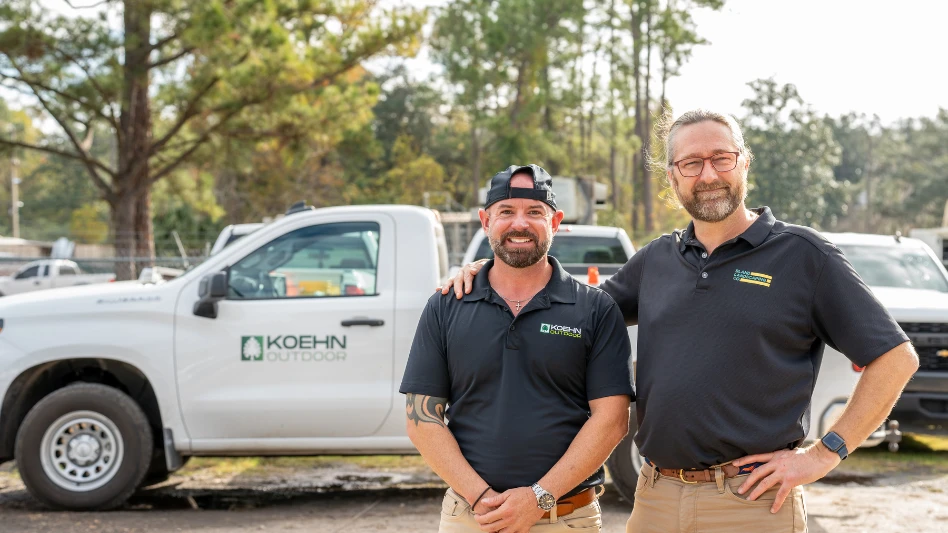 © Noonie | Dreamstime.comLarge-scale landscape and hardscape projects will meet a homeowner’s aesthetic desire but not necessarily fit a budget. Borst Landscape and Design in Allendale, N.J., designs projects into phases that can be executed over time to achieve the same result while working within a client’s budget.
© Noonie | Dreamstime.comLarge-scale landscape and hardscape projects will meet a homeowner’s aesthetic desire but not necessarily fit a budget. Borst Landscape and Design in Allendale, N.J., designs projects into phases that can be executed over time to achieve the same result while working within a client’s budget.
Borst’s services include large-scale residential projects that encompass design/build hardscapes integrated with the landscaping and coordinated with the home. These projects require extensive advance planning, which avoids costly mistakes and sets up the project for execution in phases. This can help ease any homeowner’s concerns about the economy and how to budget properly for the desired end result.
I am a landscape designer with Borst, and I work closely with many homeowners to prepare a master plan that makes logistical and financial sense for both homeowner and landscaper.
At Borst, we strongly encourage having a master plan, regardless of the project’s size. It puts the entire property into perspective, from the owner’s long-range goals to zoning regulations. It’s much easier for us to phase in portions of the project while preserving a cohesive overall plan. By anticipating the end result, we save the homeowner time, energy and money.
A master plan allows us to specify equipment needs and crew scheduling in advance and apply for necessary permits. When several concurrent projects are being installed in phases, it limits down-time for employees and increases scheduling efficiency for our managers and subcontractors.
Budgeting a Project, Working the Plan
The first step is for homeowners to write down their “wish list” of goals. Second, work with a landscape designer to plan a project that ties together the home, the surroundings and the desired end result. Goals may include: creating more shade, building an outdoor kitchen or adding privacy. Once the master plan is drawn up and the estimate provided, it’s time to assess how to execute the plan, especially if budget is a concern. Many homeowners don’t understand the costs of landscape architecture and can be caught off-guard. Often, budget has gone toward architectural changes or the home purchase itself.
To accomplish the desired landscape, good planning and communication come in. Listen to the client and have alternative ideas to address financial concerns.
To address those concerns, our designers at Borst will create a project timetable or select materials without compromising the overall desired results. Alternative materials that require less labor to install, can curtail a project’s cost and still meet the homeowner’s goals. The willingness to work within the client’s budget greatly strengthens customer relations. Customer loyalty is a precious commodity; flexibility is one way to earn it.
If the master plan will be executed in smaller, more affordable steps, keeping to the plan avoids piecemeal results. Money is saved in the long run by streamlining labor and keeping the project more organized; and it will run more smoothly and quickly, particularly when staging materials or dealing with the property’s logistics.
Plan Now, Save Later
We at Borst recommend when grading a property for landscaping, prep work for future phases should be done at the same time. For example, grading for a stone wall that will be installed next year avoids duplication of labor and reduces wear and tear on the turf. Another money-saving measure is to install the hardscape first and prepare the proposed garden beds and planting areas which can be added next season. Phasing in woody materials and using smaller plantings that will grow over time are big cost savers.
Younger plantings are less expensive than full-grown trees and shrubs. If the homeowner is patient and can wait a few years for the plantings to grow in, the savings are considerable in terms of materials and labor.
I have also changed landscape designs to combine a few smaller plants with a large specimen tree, or used perennials to fill in the beds and cut out some small plantings, to reduce overall cost and still produce beautiful results.
A good plan also gives professionals adequate time to line up the contractors needed for hardscapes and to get the permits and applications required for each job. Different town regulations, especially regarding drainage and patio construction, make it doubly important to have professional renderings in hand and a firm plan in mind to reduce the potential for surprises along the way.
With a master plan in place, both landscaper and customer can count on a successful outcome. Whether a large project is done all at once or implemented in phases to accommodate a budget, the overall goal should always be the same: creating something beautiful the homeowner will enjoy for years to come, without breaking the bank.
The author is a landscape designer at Borst Landscape & Design.

Explore the November 2009 Issue
Check out more from this issue and find your next story to read.
Latest from Lawn & Landscape
- Analysis of an entrepreneur
- Terra Nova's Sedum Conga Line variety wins Best of 2024 Perennial award
- Different ways to distribute
- Case's 580EV electric backhoe loader wins Good Design Award
- Davey Tree promotes Dan Herms to VP, GM of Davey Institute
- Caterpillar's Cheryl H. Johnson set for April retirement
- Registration open for sixth annual Lawn & Landscape Technology Conference
- 12 interview questions to help you hire winners





